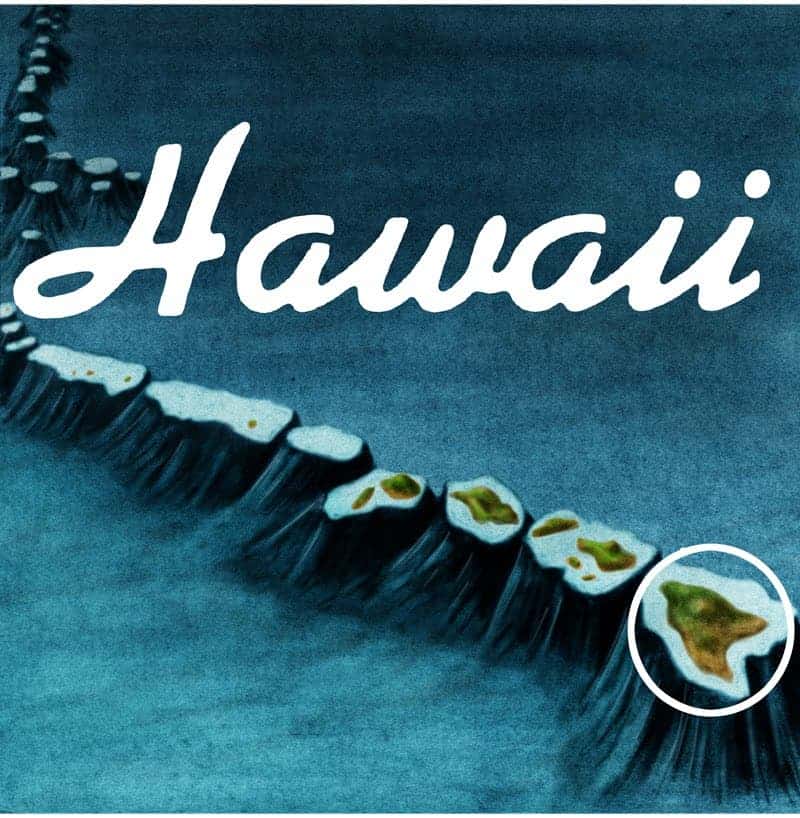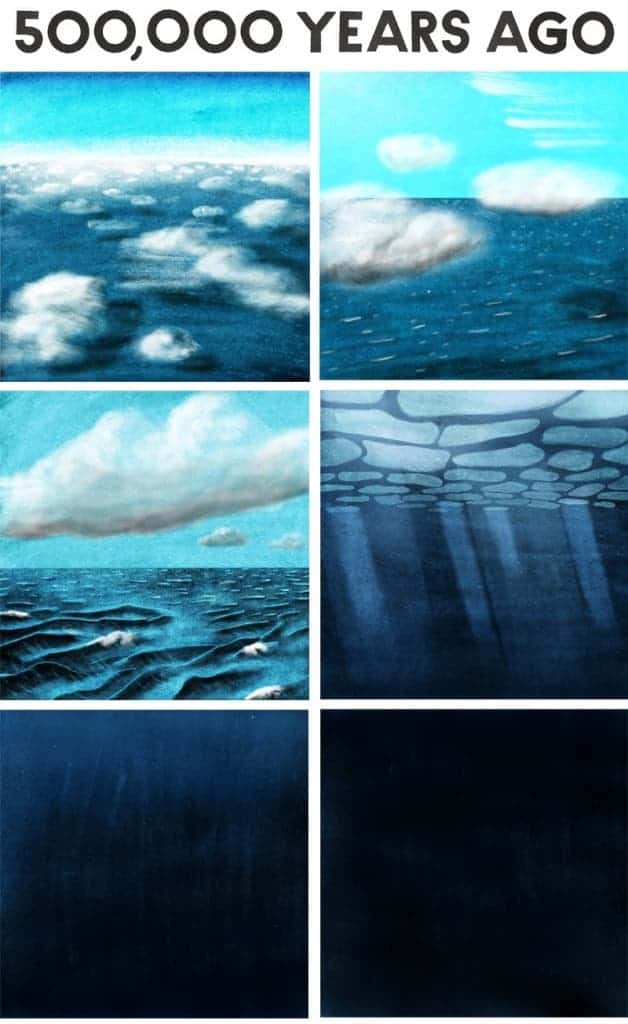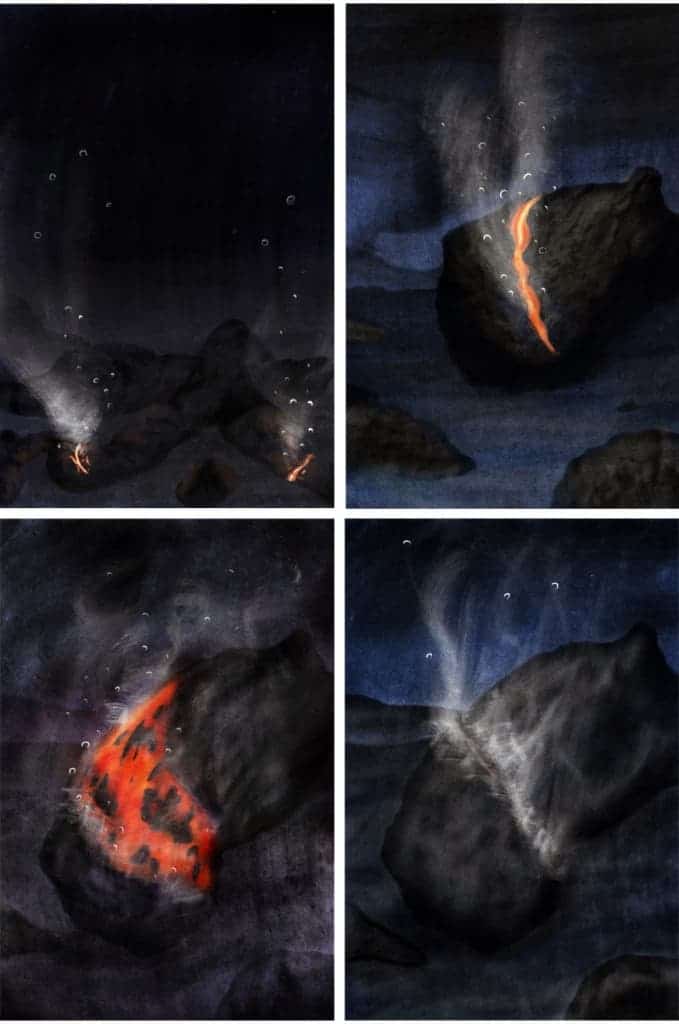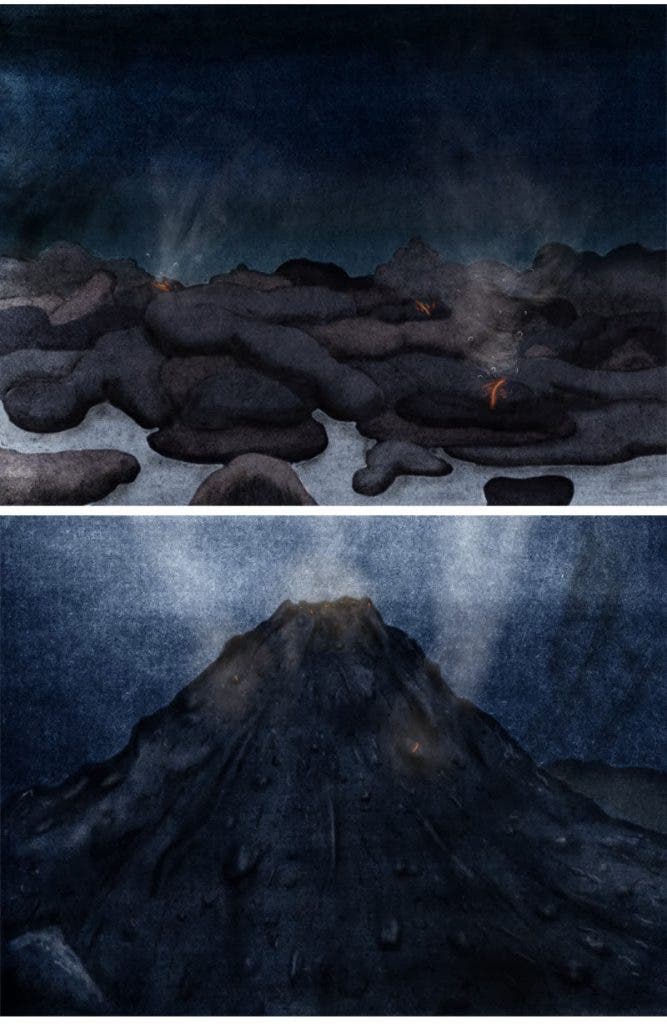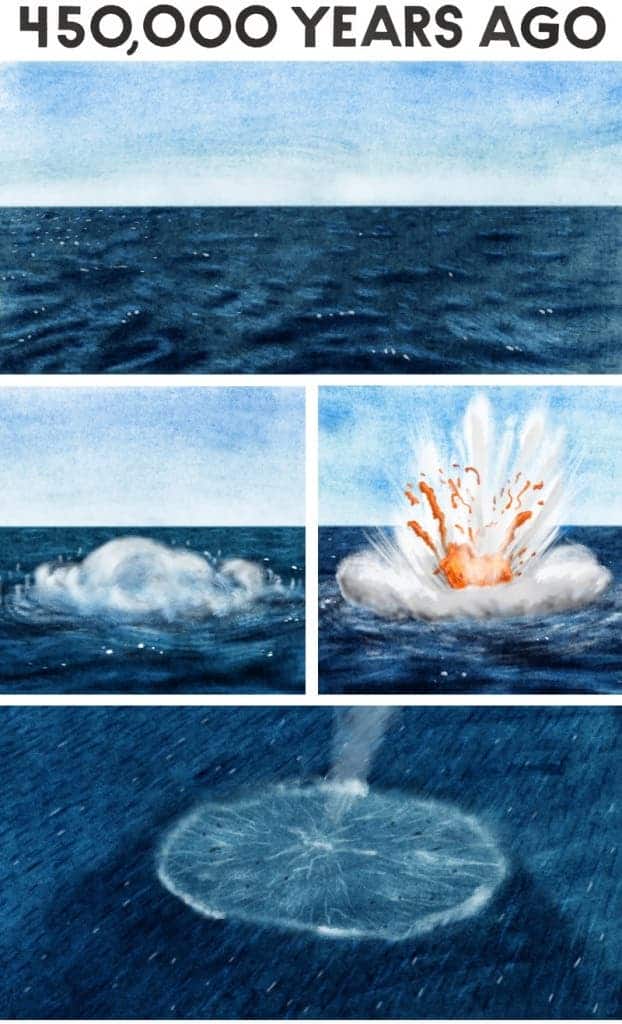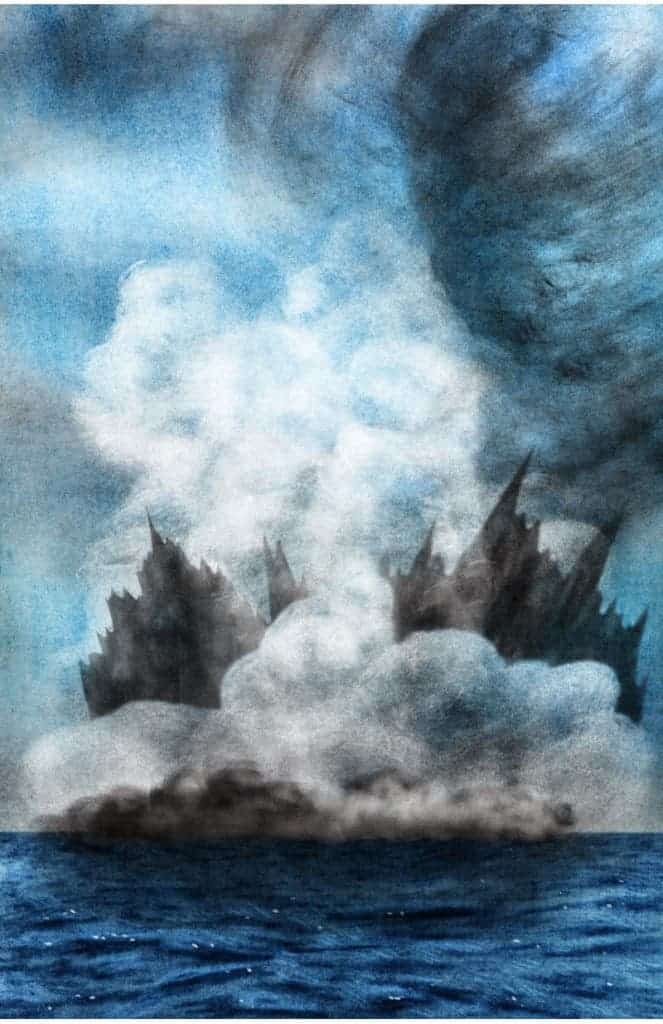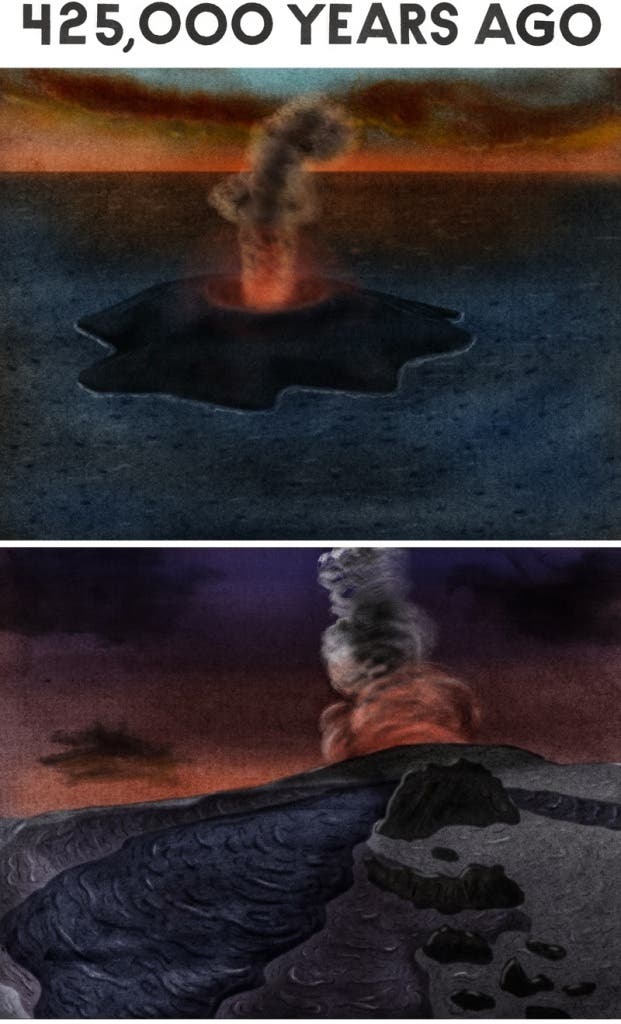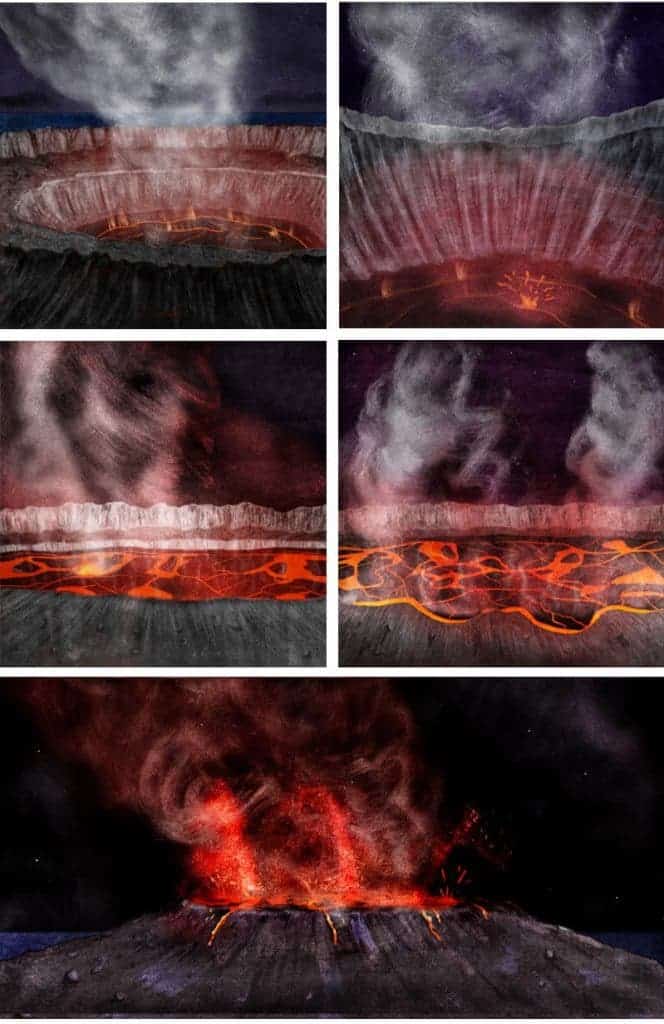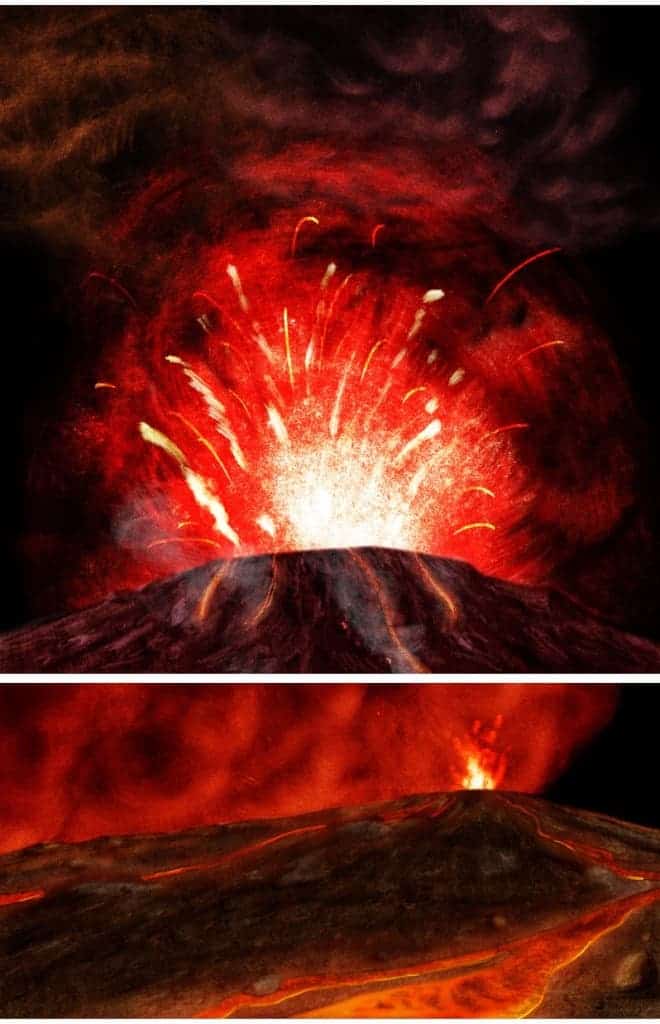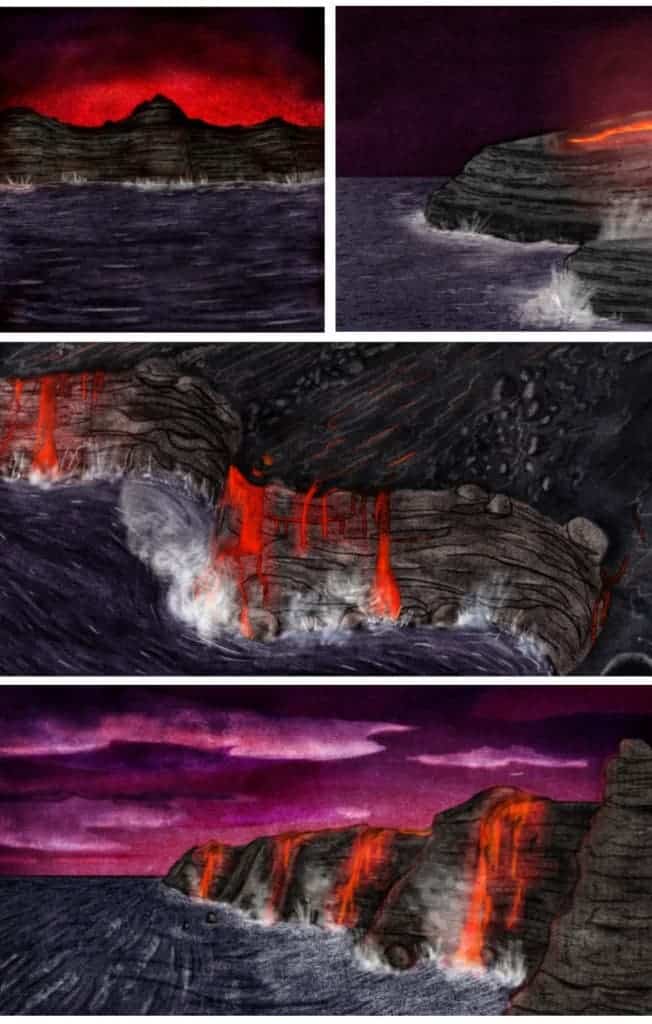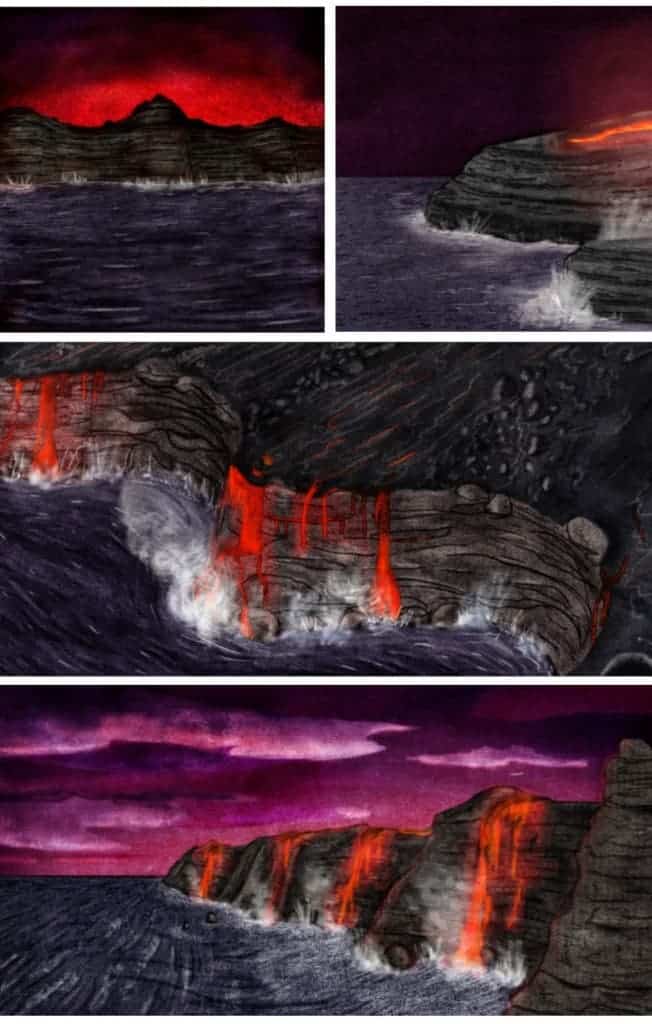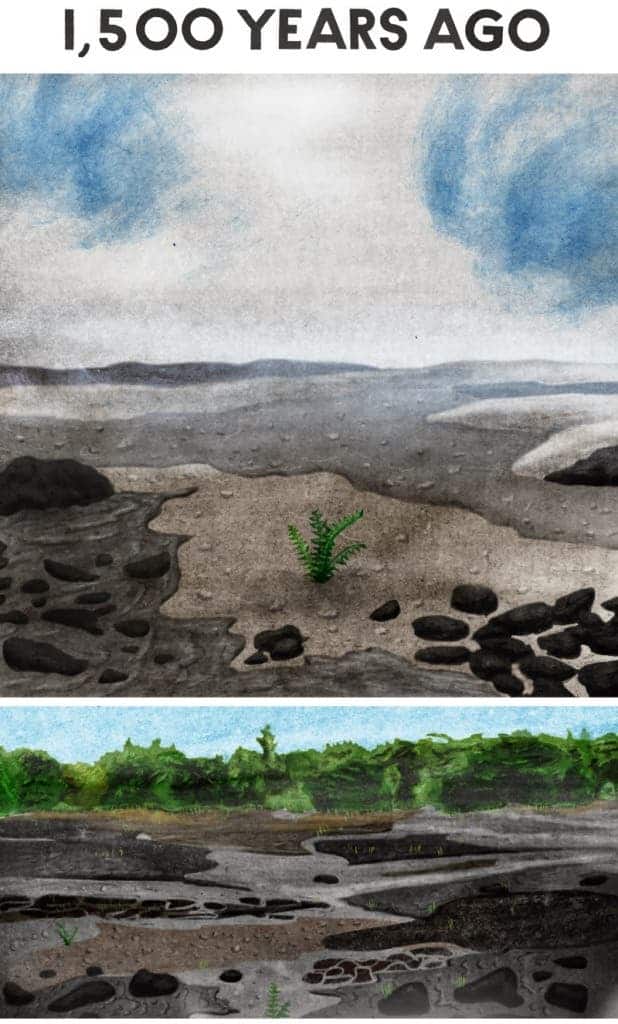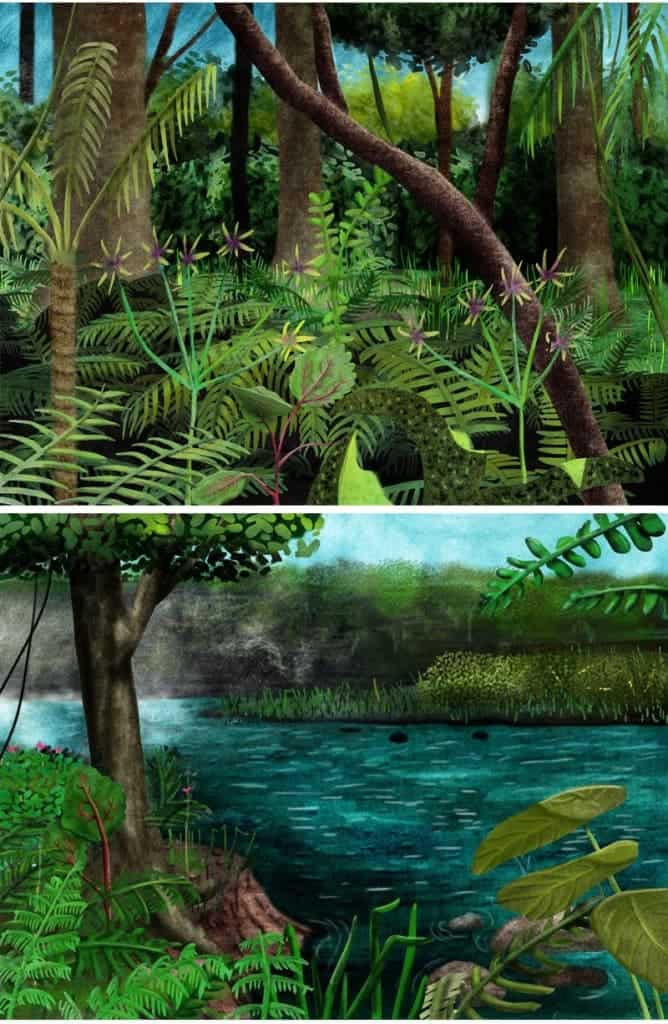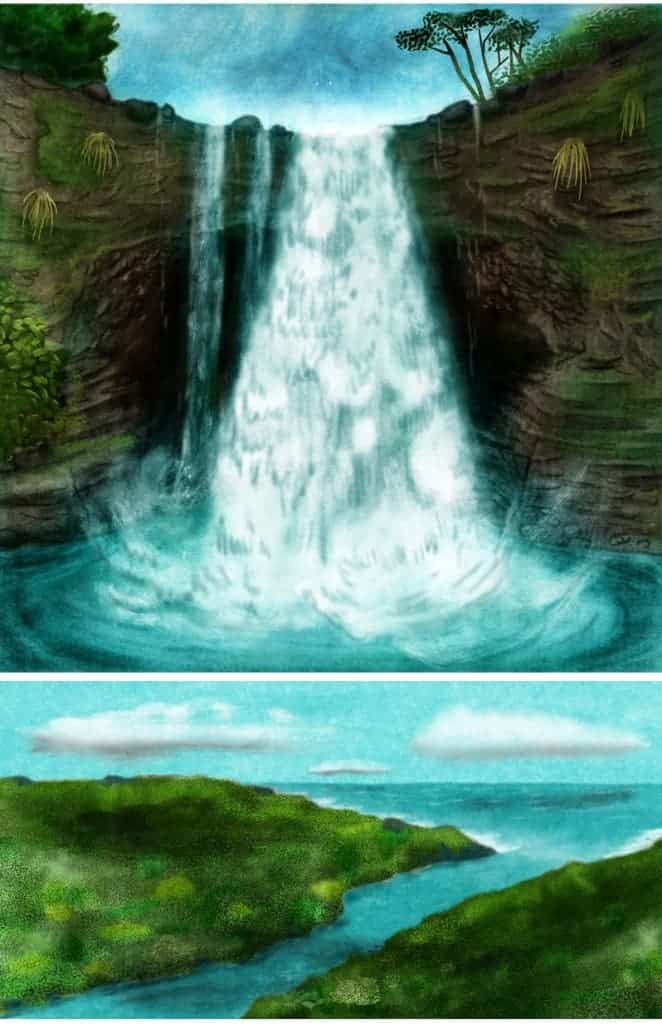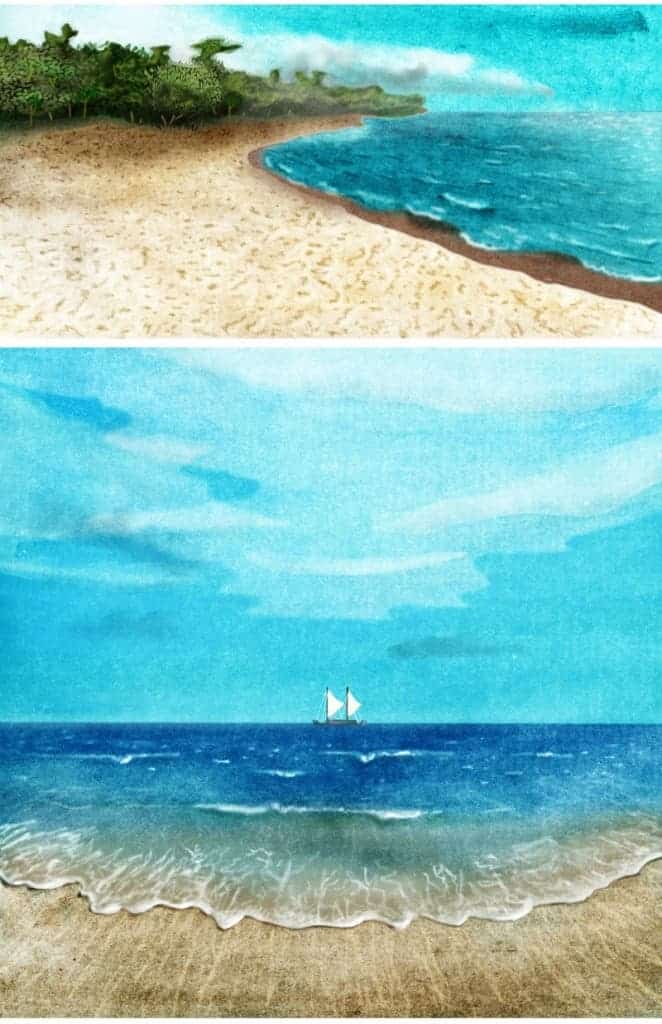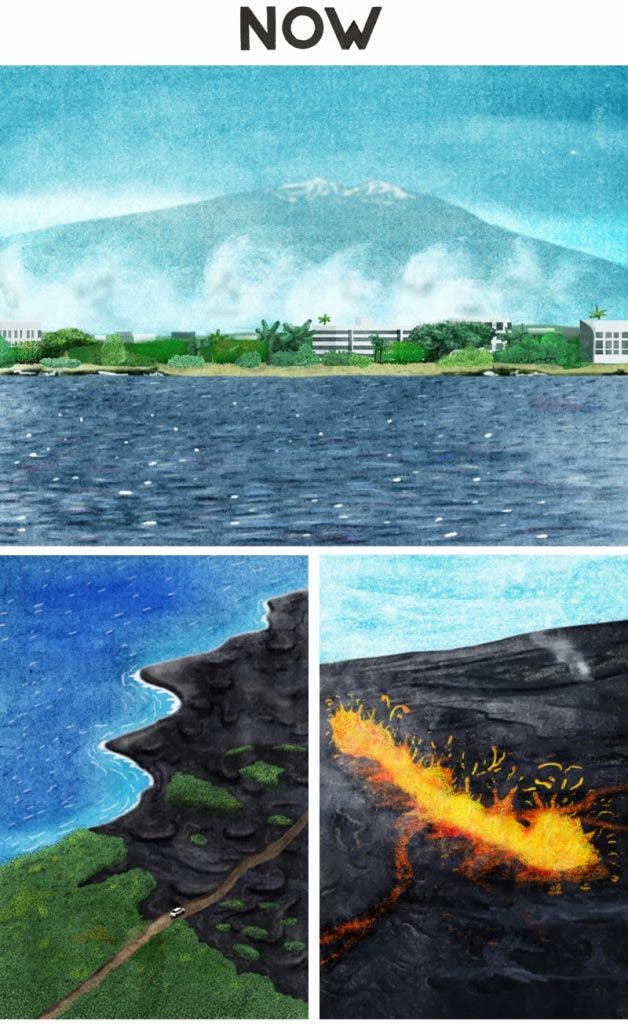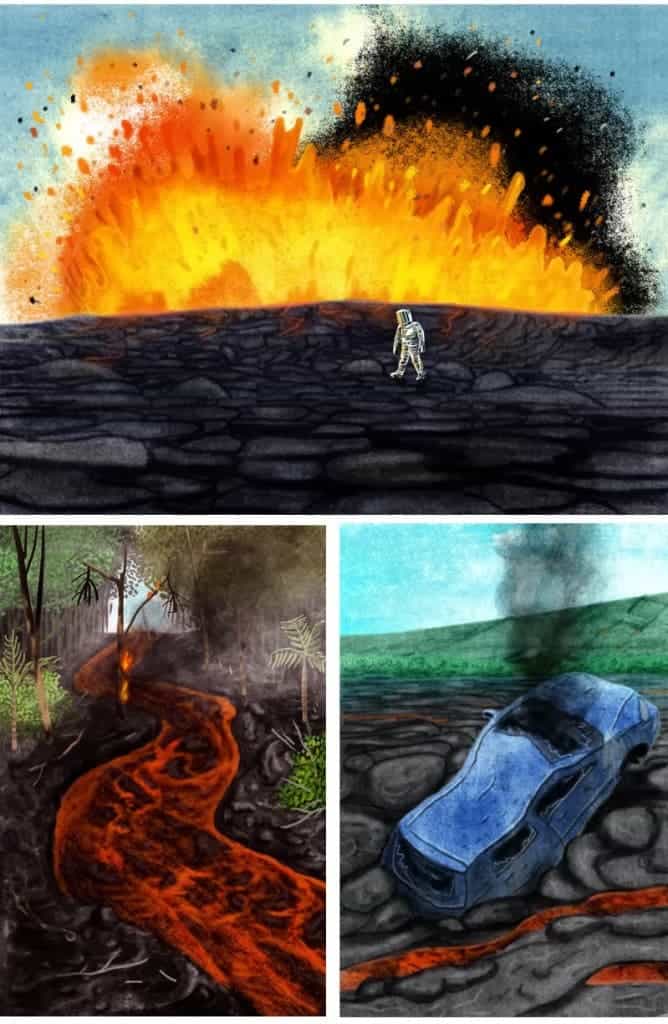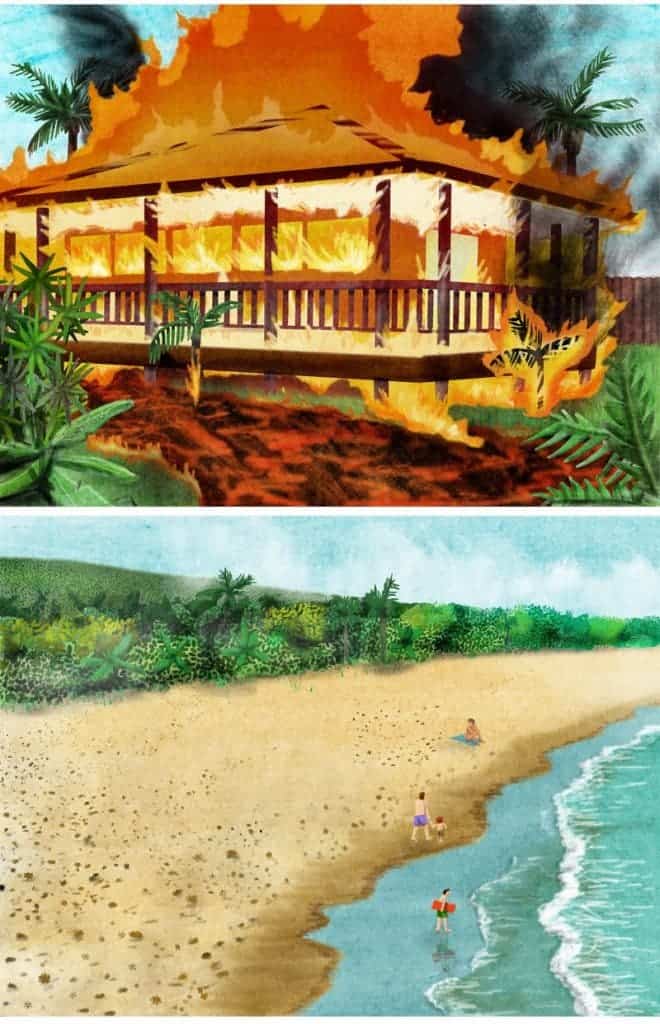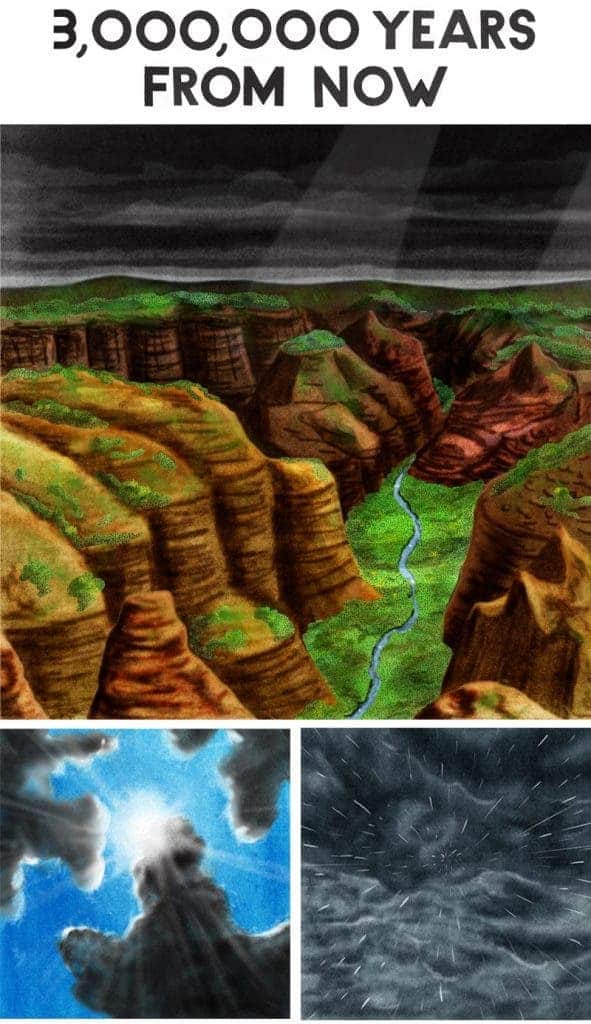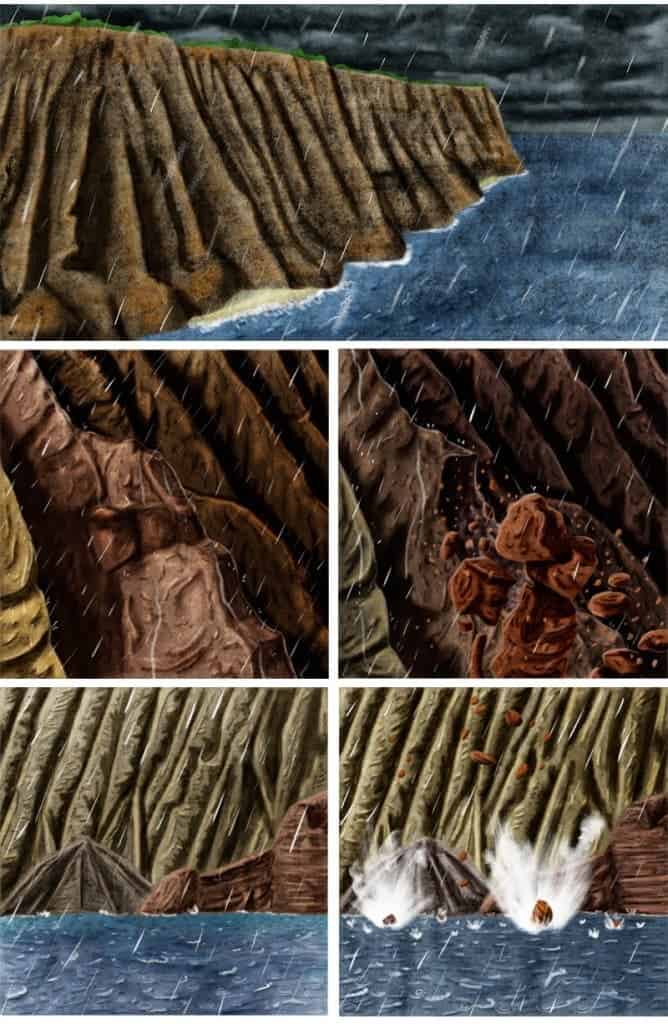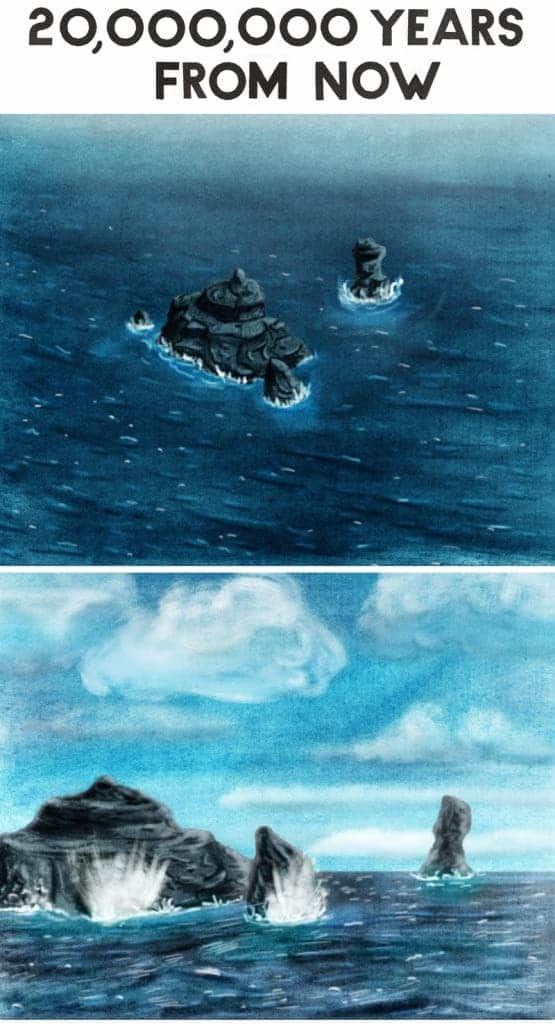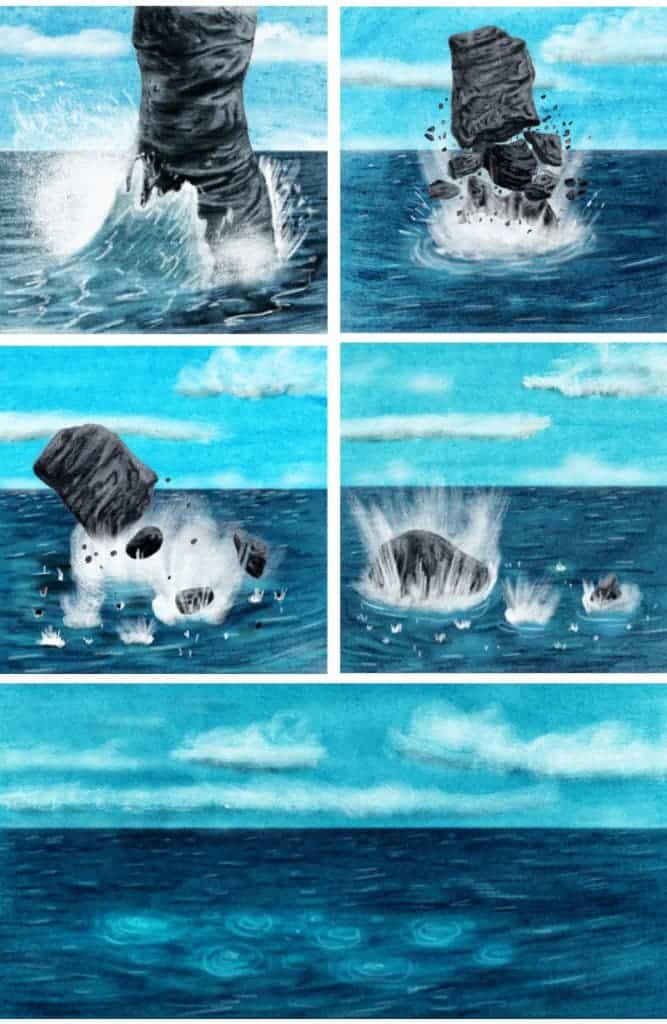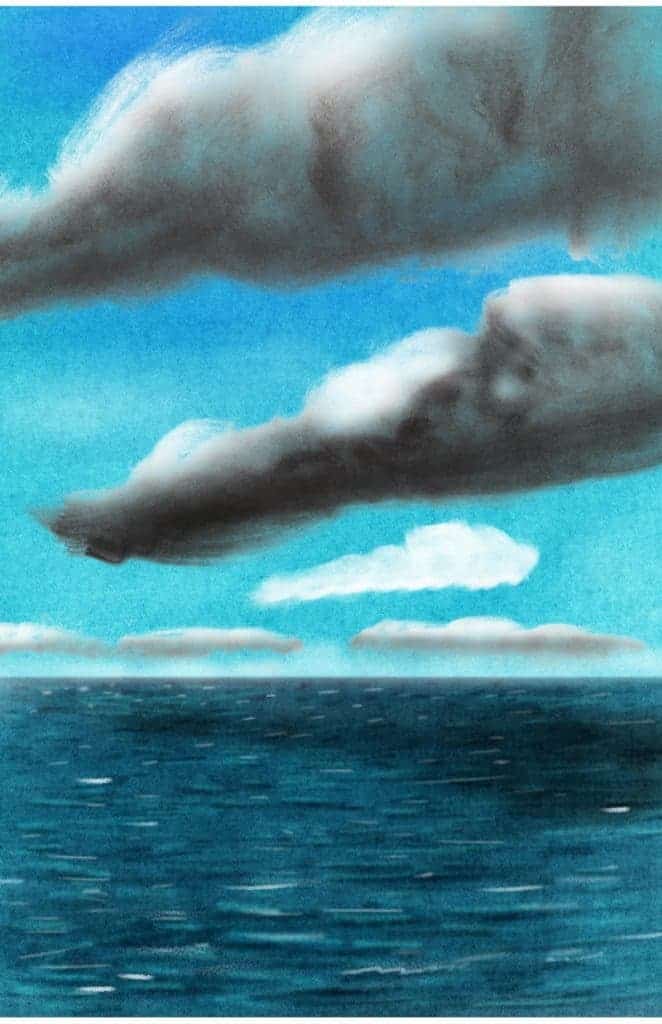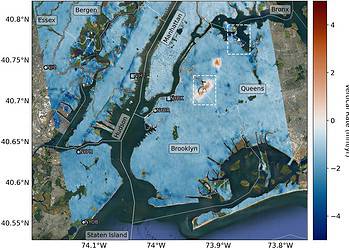Right now, flowing rivers of bubbling lava are crossing the Hawaiian countryside well through residential areas, where it devastated roads, a cemetery and a private property. The slow-moving lava from the erupting Kilauea volcano has been advancing on the town of Pahoa for weeks, with officials warning it is hot enough to incinerate any homes, roads and businesses in its path. While authorities have taken all the necessary precautions, Hawaiians themselves aren’t too stressed – they’ve been used to this kind of events all their lives. Their whole group of islands was made possible thanks to volcanic activity in the first place, so there’s no grudge to hold.
The Kilauea volcano has erupted from its Pu’u O’o vent since 1983. The last Big Island home destroyed by lava was in Kalapana in 2012, and lava flows from the volcano destroyed more than 180 homes between 1983 and 1990. What about before? Well, today you’re all in for a treat! Jed McGowan, an up and coming artist, made a beautiful comic that illustrates Hawaii’s explosive past, present and future, all in a geological time frame that spans for millions of years. The non-fiction artwork neatly summarizes how destruction and creation aren’t necessarily mutually exclusive, but essential building blocks for the cycle of creation.
The Hawaiian Islands sit in the middle of the Pacific plate, right over a hot spot, where magma from the mantle pushes to the surface. Over the course of countless eruptions spanning millions of years, the Hawaii Islands were formed, some towering more than 30,000 feet above the seafloor. These volcanic peaks rising above the ocean surface represent only the tiny, visible part of an immense submarine ridge, the Hawaiian Ridge—Emperor Seamount Chain, composed of more than 80 large volcanoes. The Island of Hawai’i is the southeasternmost and youngest island in the chain. The southeasternmost part of the Island of Hawai’i presently overlies the hot spot and still taps the magma source to feed its active volcanoes. Hawaii’s “Big Island” is still being formed by Mauna Loa and Kilauea, two volcanoes currently sitting over the hot spot. Loihi, an undersea volcano, also sits above the hot spot and will likely become the next Hawaiian island.
